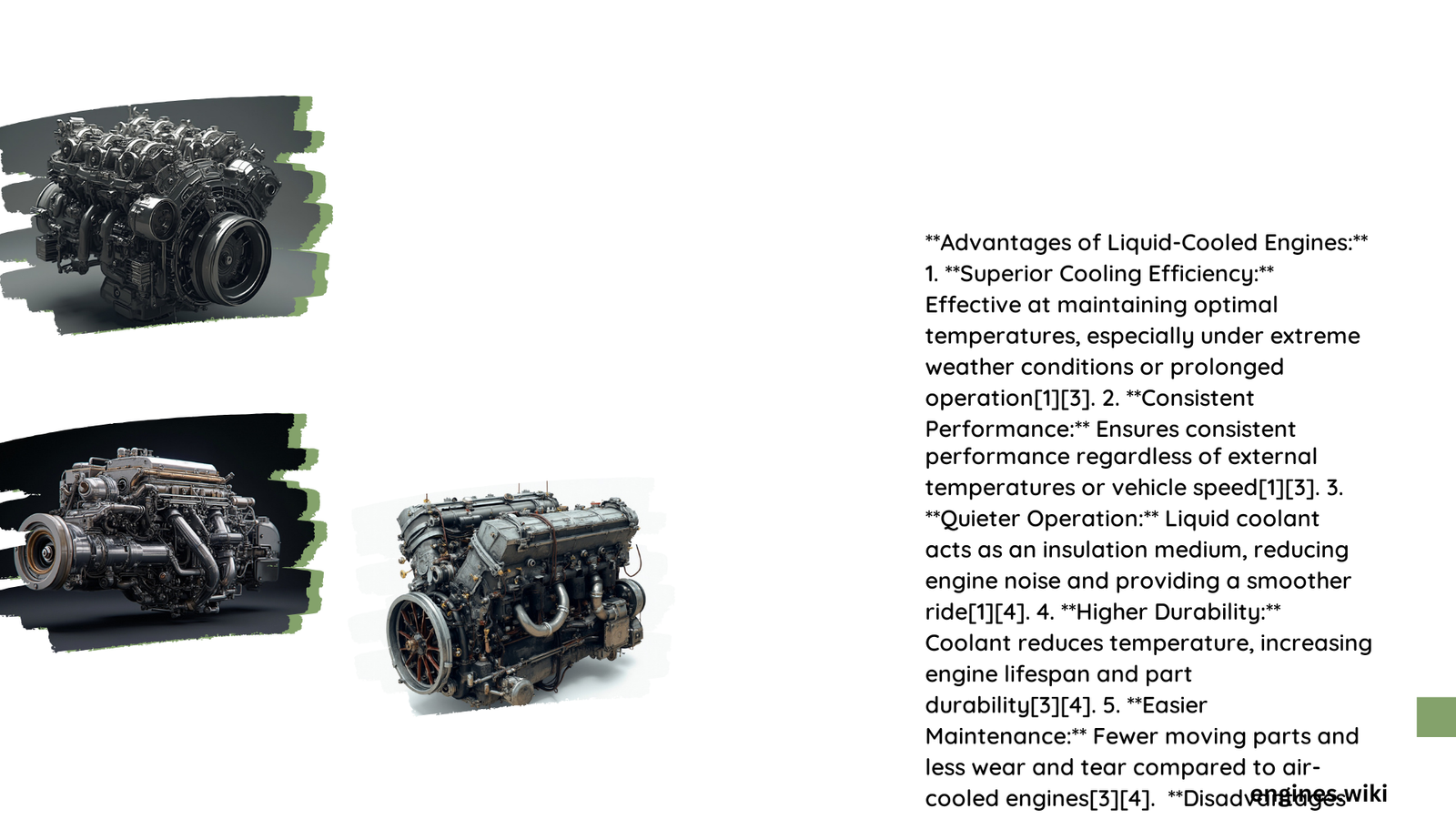Liquid cooled engines offer superior temperature regulation and consistent performance across various operating conditions. They excel in maintaining optimal temperatures, typically between 80-100°C, resulting in higher power outputs and quieter operation. However, these benefits come with increased complexity, higher costs, and potential maintenance challenges. This guide explores the pros and cons of liquid cooled engines, comparing them to air cooled alternatives.
What Are the Key Advantages of Liquid Cooled Engines?
Liquid cooled engines offer several significant benefits over their air cooled counterparts:
-
Superior Cooling Efficiency: Liquid cooled systems maintain optimal engine temperatures more effectively, especially under extreme conditions or prolonged operation.
-
Consistent Performance: These engines deliver reliable performance regardless of external temperatures or vehicle speed, crucial for high-performance vehicles and diverse climates.
-
Quieter Operation: The liquid coolant acts as an insulation medium, reducing engine noise and vibration for a smoother ride.
-
Higher Power Output: Due to efficient cooling, these engines can handle higher power outputs and more demanding operating conditions.
What Are the Main Disadvantages of Liquid Cooled Engines?

Despite their advantages, liquid cooled engines also have some drawbacks:
-
Increased Complexity: The cooling system involves more components, making it more prone to failures and increasing manufacturing and maintenance costs.
-
Higher Cost: The intricate system and additional components make liquid cooled engines more expensive to purchase and maintain.
-
Potential for Leaking: The reliance on hoses, gaskets, and seals increases the risk of coolant leakage, which can lead to engine damage if not addressed promptly.
-
Weight and Size: Liquid cooled engines are generally heavier and larger due to the additional cooling system components.
How Do Liquid Cooled Engines Compare to Air Cooled Engines in Performance?
Let’s compare some key performance metrics:
| Metric | Liquid Cooled Engines | Air Cooled Engines |
|---|---|---|
| Temperature Regulation | 80-100°C (consistent) | Variable (less consistent) |
| Weight | Heavier (20-50 kg more) | Lighter |
| Power Output | 100-500+ HP | Up to 100 HP (typically) |
| Noise Level | Quieter | Louder |
| Fuel Efficiency | Generally better | Variable |
What Is the Efficiency of Liquid Cooled Engines?
Liquid cooled engines generally offer better efficiency due to their superior temperature control:
- Fuel Consumption: Typically ranges from 8-15 L/100km for passenger vehicles, though this can vary significantly based on the specific vehicle and operating conditions.
- Thermal Efficiency: While exact percentages aren’t provided, liquid cooled engines can achieve thermal efficiencies close to the theoretical maximums for internal combustion engines, often around 30-40% efficient.
What Are the Maintenance Requirements for Liquid Cooled Engines?
Maintaining a liquid cooled engine involves several key aspects:
- Service Intervals: Coolant changes are typically required every 30,000 to 50,000 km.
- Coolant Replacement Costs: Generally range from $50 to $200, depending on coolant type and labor costs.
- Common Challenges:
- Potential coolant leaks
- More frequent inspections due to system complexity
- Regular checks on hoses, gaskets, and seals
How Do Liquid Cooled Engines Affect Overall Vehicle Performance?
Liquid cooled engines significantly influence vehicle performance:
- Acceleration: A typical passenger vehicle might achieve 0-60 mph in 8-12 seconds, with high-performance vehicles capable of under 5 seconds.
- Power Output: Horsepower ratings can range from 100 HP to over 500 HP, with torque specifications from around 100 Nm to over 500 Nm.
- Overall Impact:
- Smoother operation
- Better fuel efficiency
- Higher power outputs
- Increased vehicle weight
What Are the Costs Associated with Liquid Cooled Engines?
The costs of liquid cooled engines are generally higher due to their complexity:
- Installation Costs: Typically higher than air cooled engines, though exact figures vary widely.
- Repair Costs: Can range from $200 to $1,000 or more, depending on the specific component and labor involved.
- Maintenance Costs: Higher due to more frequent inspections and potential for component failure.
In conclusion, liquid cooled engines offer superior performance and efficiency but come with increased complexity and cost. The choice between liquid and air cooled engines depends on the specific application, budget, and performance requirements.
